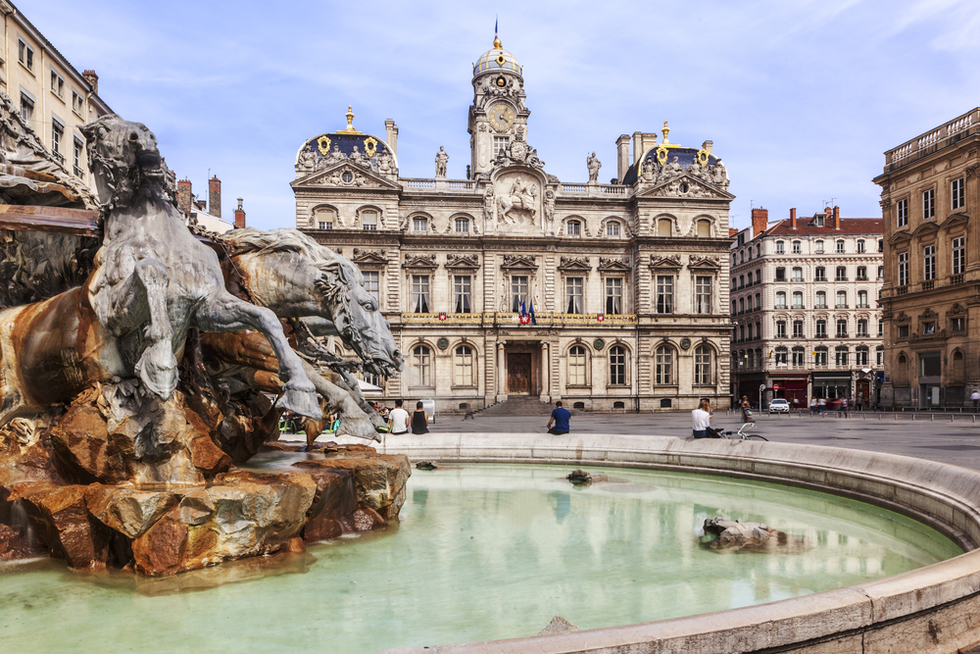Wandering through Vieux Lyon: The third largest city in France has a chocolate-box historic centre, filled with labyrinthine lanes lined with shops and cafés. Tourists are omnipresent in this part of town, but it’s still intoxicatingly atmospheric; especially the city’s quirky traboules - medieval covered passageways and spiral staircases that once allowed residents to cross the city without being seen. Follow their trail today and you get to glimpse at Lyon’s quaint hidden courtyards (see below), gardens and art galleries.
Exploring Fourvière’s Roman quarters: Just above the old town, a funicular climbs the steep Fourvière hillside to the Notre-Dame Basilica, where you can take in sweeping vistas over the whole Presqu’Île. You’ll also find the wonderfully preserved ruins of Lugdunum (Roman Lyon), where a pre-Christian amphitheatre is still used for shows today. The nearby museum, filled with archaeology treasures, contains a miniature reconstruction of the hillside during the Roman Empire.
Shopping on the Presqu’Île: Nestled between the beautiful banks of the Saône and the Rhône rivers, the Presqu’Île is Lyon’s main commercial centre - and a beautiful one to boot: Shops cluster under the stately façades of 19th-century Haussmanian buildings, adding a touch of class to your shopping spree. For high-street chains and quirky boutiques try rue Victor Hugo and rue de la République, separated by beautiful place Bellecour, one of the largest squares in Europe.

Dining in a Bouchon: It might be nestled down a hidden backstreet, in the heart of Vieux Lyon or smack bang in the hilly Croix-Rousse district. Wherever you find your red-and-white table-clothed Bouchon (the name for traditional Lyonnais restaurants), loosen your belt: Portions are always hearty, and generally include specialties like black pudding, quenelles (dumplings) and plenty of pork sausages—best washed down with local Beaujolais wine.
Trailing Lyon’s silk industry in Croix Rousse: Lyon was once a major silk capital, and its centre was the Croix Rousse hillside overlooking the Presqu’Île. The silk factories have mostly moved out, but you’ll still find shops hawking fabrics and silk. The Musée des Soieries Brochier makes for a fascinating visit, illustrating how 19th-century silk weavers (the Canuts) once worked—often in deplorable conditions. After your visit, explore the former Canut quarters - now the lair of Lyon’s up-and-coming populations, with cool cafés and smart eateries.
Spending a night at the Opera: You can’t miss Lyon’s opera house: its neo-classical façade is topped by a huge glass dome, designed by star French architect Jean Nouvel. But architecture isn’t the only reason to visit. Within its walls you can take in some of the best opera, ballet and classical music concerts in France, plus toe-tapping jazz concerts in the cool Amphiopéra bar area downstairs.
Note: This information was accurate when it was published, but can change without notice. Please be sure to confirm all rates and details directly with the companies in question before planning your trip.









